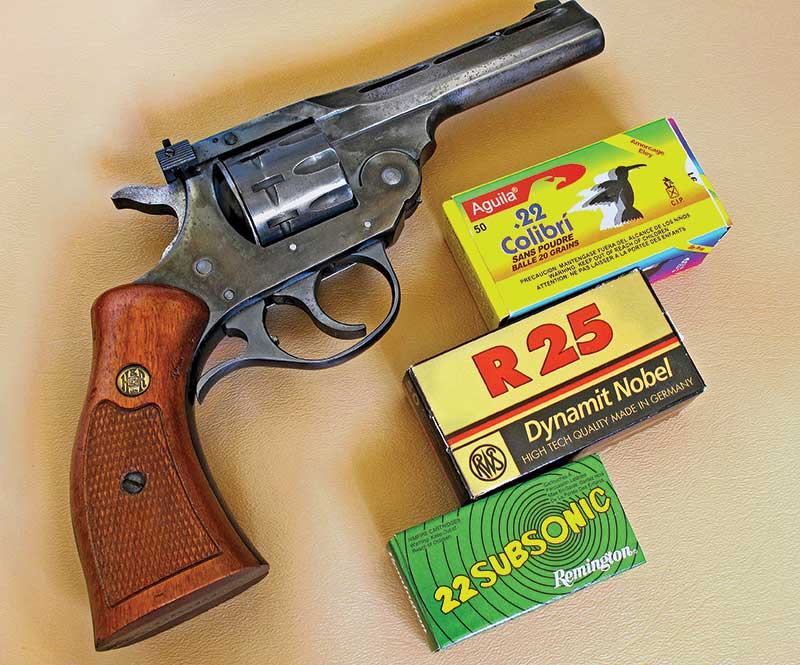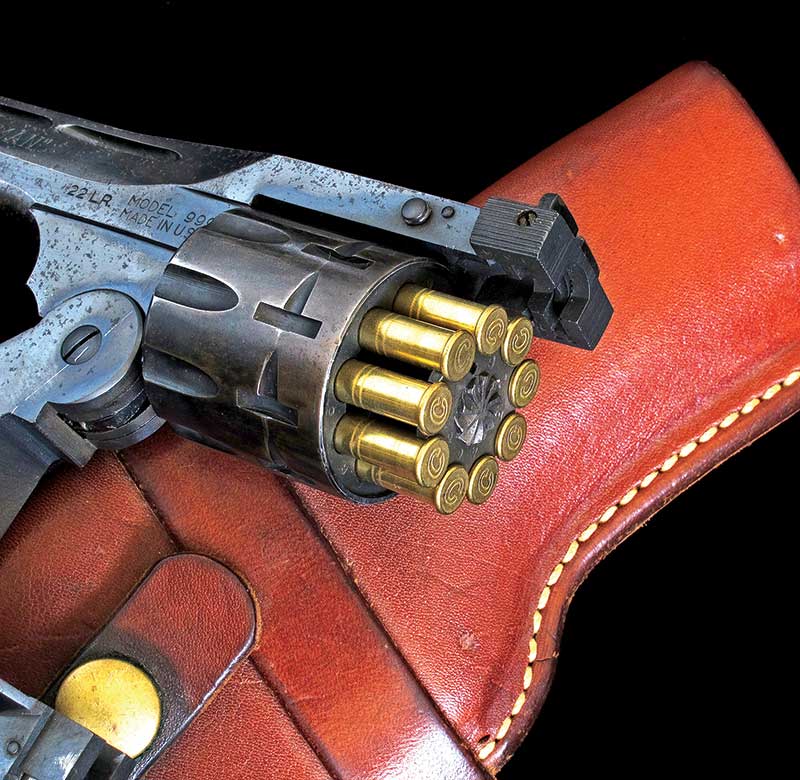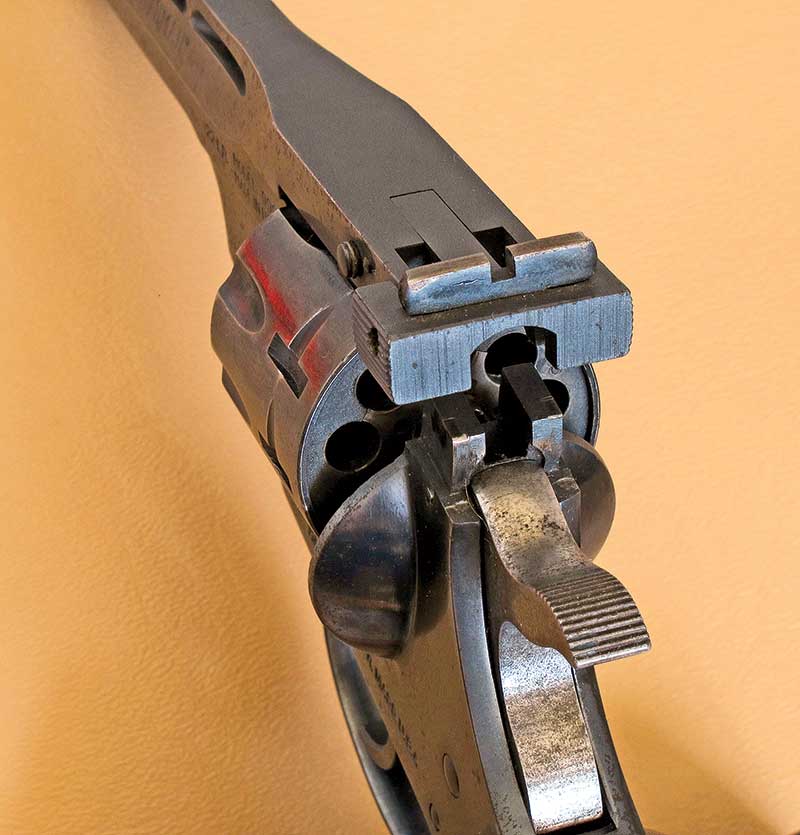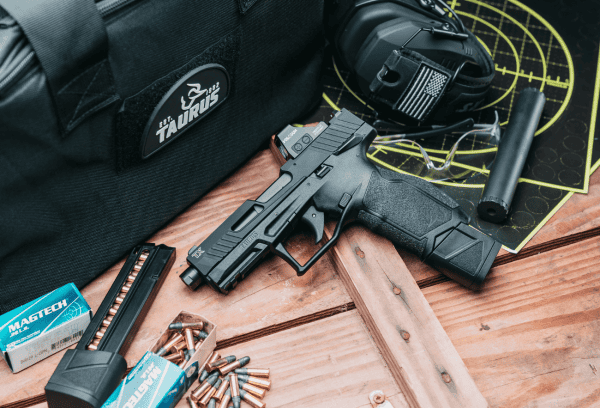Classic Test: H&R’s Model 999
Rock Solid And Ugly, But Still
A Top .22 LR Working Gun
Along with many other shootists, I’m totally sold on the merits of a .22 revolver. It’s a type of gun you’ll find in the collections of experts and smart beginners alike. Trouble is, most full-sized .22 revolvers today are quite expensive. For the shooter who sees the benefit of a double-action .22 though, there’s a more affordable option too-often forgotten by most of us — the Harrington and Richardson (H&R) Model 999 “Sportsman.” Not only is this a full-sized, accurate and exceedingly durable .22, but it’s also got a few quirks making it a tremendously fun gun to load and shoot!
Top Break Ain’t Broken
Like the old Webley .38’s and Schofield revolvers of yore, perhaps the most novel aspect of the H&R Sportsman 999 is it’s a top-break. Lift up on the rear sight and the revolver hinges at the frame. As the gun is scissored open further, the extractor will automatically raise and eject the cartridges or empties. And speaking of chambers, this sixgun — isn’t. As its moniker suggests, this gun holds nine rounds.
There’s a lot to recommend about the Sportsman as a good gun in its own right. The stocks are generous and hand-filling and the sights are fully adjustable, allowing it to be easily tuned to a favorite load. And, seeing as how it’s a revolver, it will digest any .22 ammo stuffed into its cylinder, including screaming-fast hypervelocity ammo, target-grade subsonic loads, and even Aguila’s very nifty primer-only Colibri rounds, propeling 20-grain bullets at a glacial 375 fps. It’ll even eat .22 short and .22 long ammo.
65+ Years
H&R made the revolvers from 1932 until 1986, at which point the original company shuttered. When H&R became part of New England Firearms in 1989, the Sportsmans were produced once again from ’89 through the year 2000. Sixty-five years of production ain’t too shabby!
What this means is there’s a Sportsman out there with your name on it. Since most H&Rs weren’t exactly considered to be safe queens at any point in their life, there’s a lot out there — my example included — which were quite clearly used, in multiple senses of the word. I’ve seen quite a few H&R Sportsmen become hosts for “baby’s first drill ‘n tap” gun projects, and all manner of sights and grips have been kludged onto these guns over the years.
Scratched, holster-worn, and mottled, my example was probably used as a desert or ranch gun. But does it eject and go bang every time? You betcha. If you’re willing to deal with a little cosmetic ugliness, you can usually find them at the sub-$250 mark. “One man’s treasure,” and all that.
Anything Bad?
There’s a heavy double-action pull — a side effect of the gun’s tendency to give every cartridge rim a firm smack. Consequently, you need to be mindful not to yank the front sight to and fro in the last stages of trigger travel. The single action H&R trigger is still heavy at about 6 pounds, but quite usable. Mechanically, the gun is accurate enough to print quarter-sized groups at 10 yards. It wouldn’t be my first choice if I were shooting a bullseye match, but a missed tin can within 25 yards is going to be the fault of the shooter.
All things considered, the H&R Sportsman 999 is a good gun — but it’s a great bargain. However, considering the rising demand of even “well-loved” pieces like my own, it seems more shooters are catching wise to the design’s charms — even if they are a little, um … homely. Source one now, or kick yourself as prices climb higher. Even an ugly duck could use a good home.








